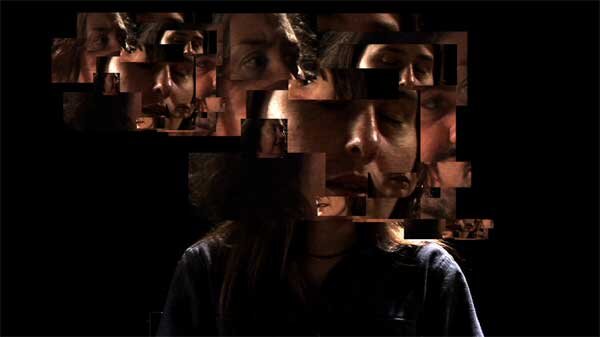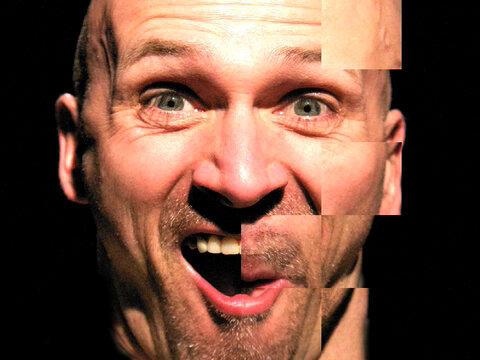Chameleon Project 2008-2011
"Chameleon" uses ‘emotional algorithms’ based on affective neuroscience studies. The piece demonstrates how we often have the uncanny ability to decode and predict the beliefs, goals and feelings of others. Each screen reads the audiences emotional expression of the audience, igniting a range of video portraits which were filmed around the world. The work, if it senses sadness in the audience, can often elicit the video portraits to start crying around the audience. Over time, the video portraits attempt to build empathy with the audience, trying to build an emotional homeostasis, an emotional calmness.

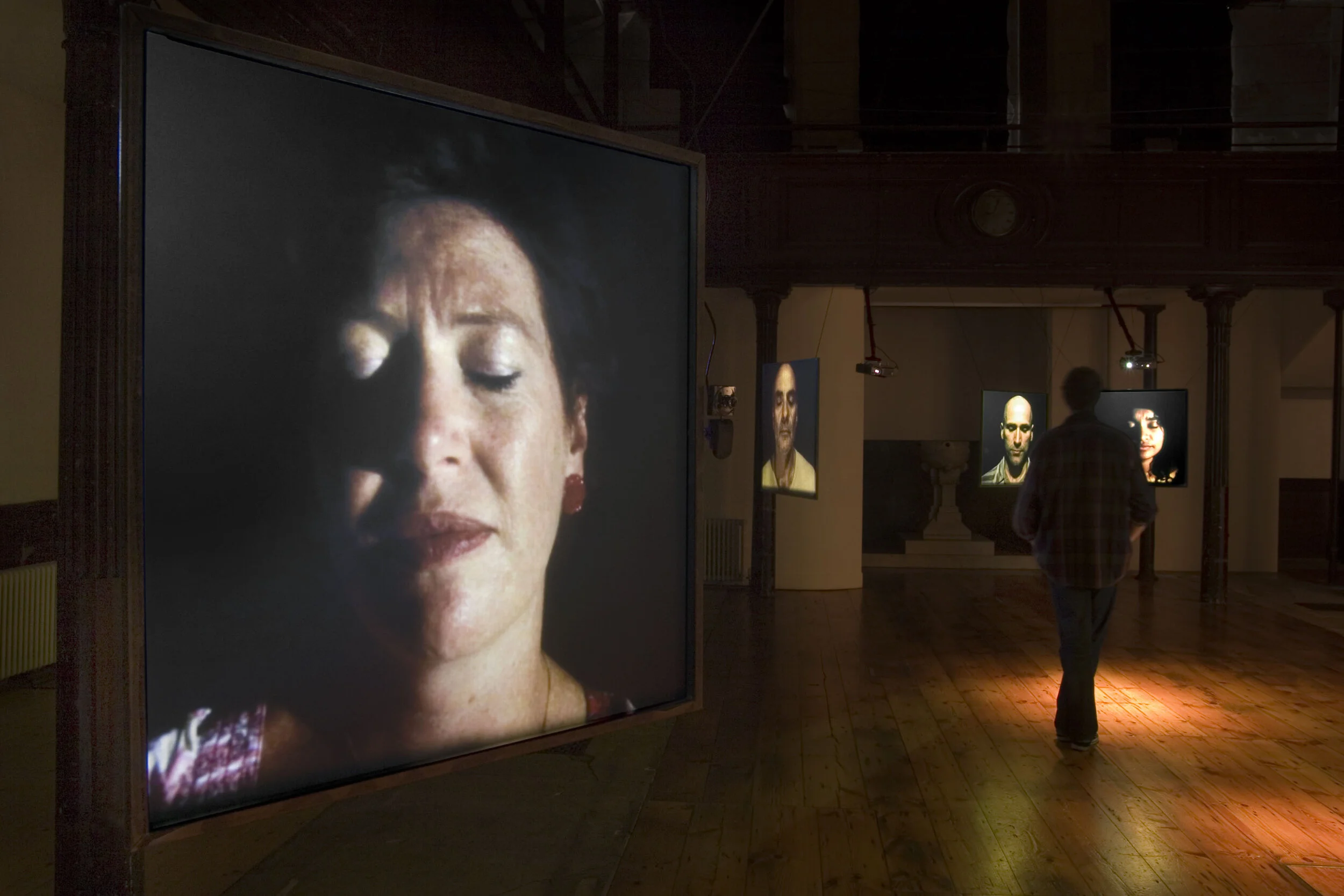
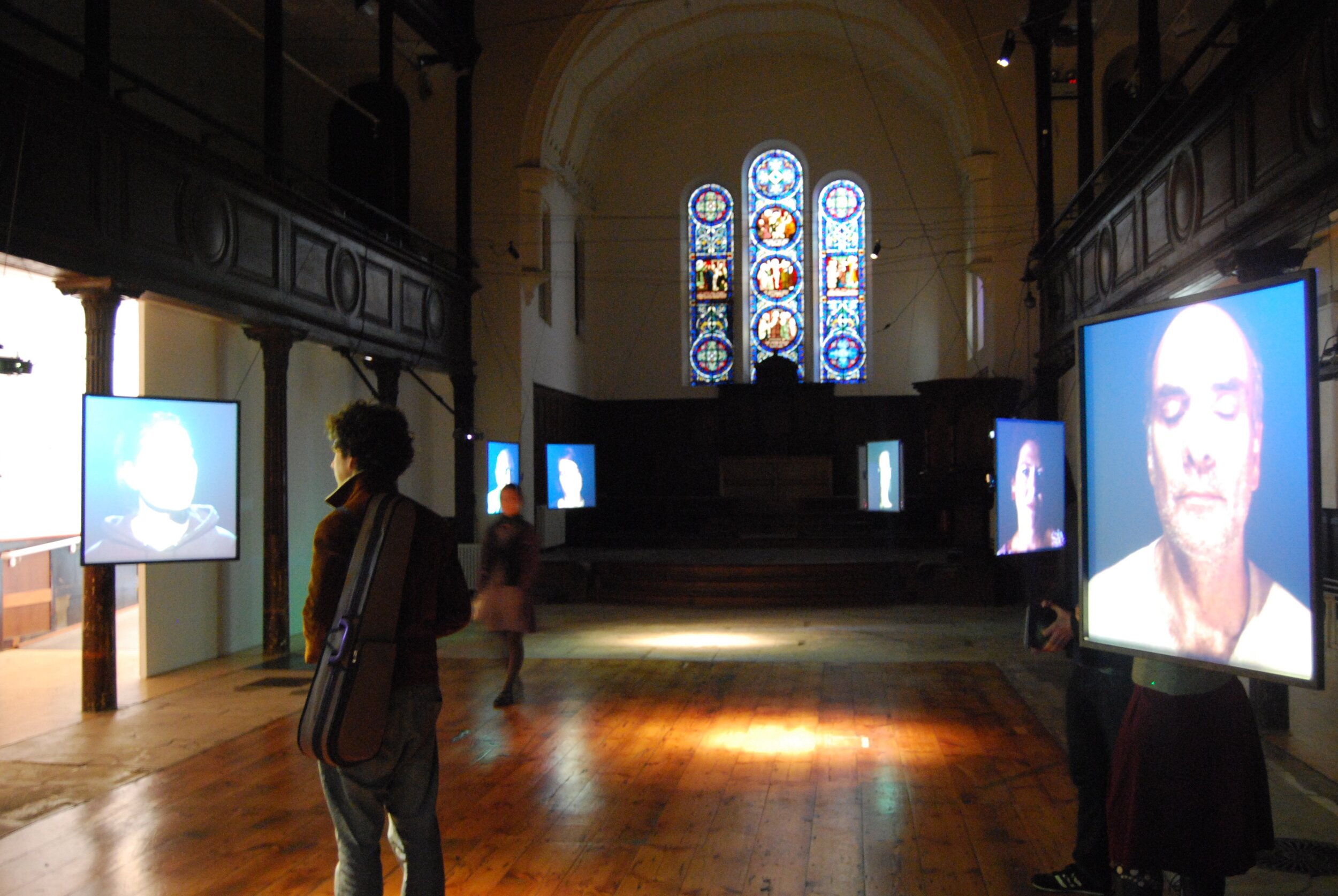



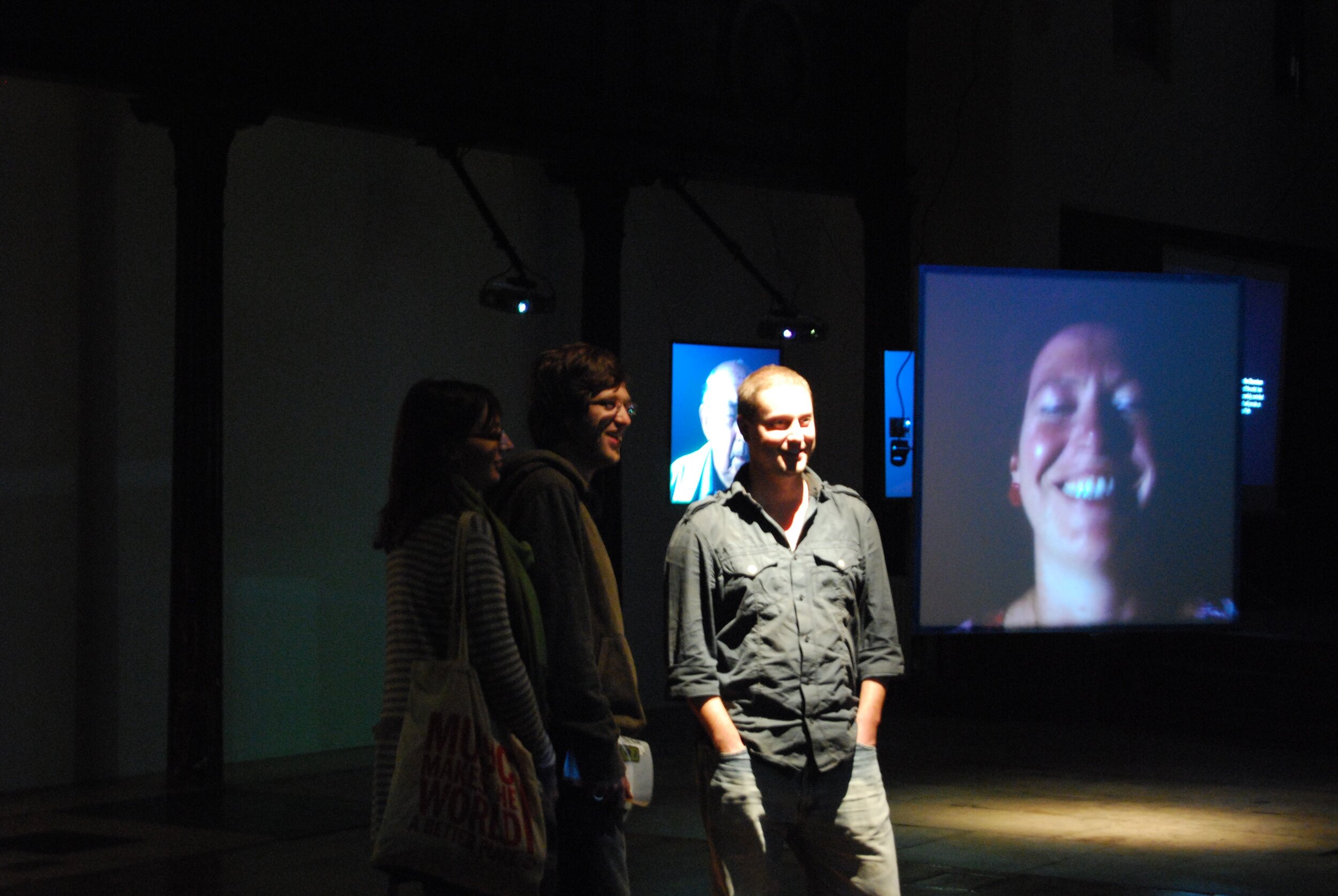

Building the project
prototype 01.
Creating an ethnographic study of emotional contagion:
Chameleon Prototype 01 results in a single channel film capturing, isolating and amplifying the transference of emotions between friends. The aim was to capture micro expressions that we often miss consciously in day-to-day interactions.
prototype 02.
creating a live emotional contagion tool
Chameleon Project, Prototype 02 is a performance tool that slows down a display of live social interaction, decoding the unspoken, subtle elements of mimicry that come into play over social situations. It allows the audience and participants to view the micro-expressions and fleeting moments of cohesion and incongruence that we may often miss consciously.
prototype 03.
Mimicking emotional contagion:
Banff Center for the Arts, CANADA, March 2008.
ICA, London, April 2008
Chameleon Prototype 03 is a two screen video installation, exploring the intimate communication between two people. The screens display the profiles of a man and woman, starring at each other. The two video screens of the man and woman interact via an embedded video of emotional intelligence.
prototype 04
The Search for Meaning:
ICA, London, April 2008
Lighthouse, Brighton 2009
Chameleon Project, Prototype 04 is a video installation exploring emotional dialogues. It further considers the profile aesthetic of a couple explored in Prototype 03. The figures continue to interact with each other via the ‘emotional algorithms’, working through a never-ending journey of emoting to each other as they searching for understanding.
prototype 05
Shifting Emotions :
Chameleon Project, Prototype 05 is an interactive single channel video portrait using emotional codes to build the visuals. The portrait is in flux, fragmented. Each fragment constantly infects the fragment around it. Chameleon Project, prototype 05 tests different ways of using video image of emotional expressions on the screen to emulate the often leaky, complex and confused nature of emotional expression. The conclusion is an interesting two channel experiment, though in the final interactive, multi-participant situation, it could lead to confusion as its too complex, and abstract.
prototype 06
Integration of mind reading technology
Chameleon 07, Superhuman, RMIT Gallery, Melbourne 2009
Chameleon 07, Kickarts, Cairns, 2009
Chameleon 07, ISEA, Istanbul, 2011
Chameleon 07, Dana Center, Science Museum, London 2009
Chameleon 07, Lighthouse, Brighton, 2009 (see blog)
Chameleon 07, Sharjah Art Gallery, Cairo, 2009
Chameleon 07, Residency and commission for evaluation of interaction (visual journey of residency)
CHAMELEON project, prototype 07 is an emotionally interactive video installation. This prototype integrates audience into the interaction scenario. The audience’s expression drives the video portraits to emotionally empathize with the audience.
prototype 08.
Testing new types of displays.
process blog of Prototype 08 and Light House Residency, UK Brighton
video of the development of prototype 08
CHAMELEON project, prototype 08 is an emotionally responsive video sculpture. The Chameleon Team collaborated with French artist group Experientiae Electricae to further develop Pixy, a large-scale flexible modular display. Prototype 08 integrated what has been learnt in the past prototypes converging this with the Pixy display, to provide new ways to experience the Chameleon Project, through more immersive, sculptural and evocative screens.
The displays of Pixy are built using light, electroluminescent paper, breaking down the aesthetic and resolution of the video into mono-toned, larger pixels. Interestingly, research shows that reducing the resolution of the image would not affect the emotional reading of the video portraits. Tests show the amount a visual portrait can be broken down into pixels, and the emotional tone of the face can still be read.
In an immersive process, CHAMELEON project, prototype 08, transforms the room into a moving video sculpture in direct relation both to architecture of space and to the viewer’s perception.
Prototype 09.
emotionally interactive video installation
Fabrica, Brighton, UK
Science Gallery Bengaluru, India 2021
How is it that an individual’s smile can lift the atmosphere of a room, or that we find ourselves ‘catching’ another’s mood from a display of anger,
fear or disgust? Chameleonis an interactive video installation that explores the subject of emotional contagion between groups and individuals and it stems from Tina Gonsalves’ continuing fascination with human emotion, intimacy and vulnerability.
For Chameleonat Fabrica, the final in a series of nine experiments, the gallery becomes an emotional theatre in which visitors and digital video portraits interact.
Gonsalves and her team have developed software to seek out visitors’ emotions and then trigger an ‘emotionally intelligent and learning’ computer system to play back video portraits in response. Each day the mood of the Chameleonportraits will adapt to the range of visitors’ emotional expressions, affecting the tone and emotional ecology of the gallery space.
Chameleon highlights how often we are on the threshold of trying to make sense of each other and how we search for meaning and authenticity
through balanced codes of expressions, dialogue and body language.
the collaboration.
For Chameleon, Tina Gonsalves leads a collaborative team merging the disciplinary boundaries of art, science and technology.
While undertaking the Chameleon Project Tina was artist in residence at the Wellcome Department of Neuroimaging London, UK, MIT Media Lab, Cambridge, USA, Brighton and Sussex Medical School Brighton, UK, and Nokia Research
Labs Tampere, Finland.
The Chameleon Projects a collaboration between Tina Gonsalves, neuroscientists Chris Frith and Hugo Critchley and affective computer scientists, Ros Picard and Rana El Kaliouby, affective human computer scientist, Nadia Berthouze.and curator Helen Sloan.
It is funded through the Wellcome Trust, Australia Arts Council, Arts Council England, Australian Network for Arts and Technology, Lighthouse, and is supported by UCL, Brighton and Sussex Medical School, Solent Centre for Innovation and Design, SCAN, MIT Media Lab, Dana Centre and The Banff New Media Institute, Canada.
find out more
The collaborative team discussing the building of the Chameleon Project
The Chameleon Project at Fabrica Gallery, Brighton, 2009
1/5 CHAMELEON: Artist Talk at Lighthouse - Tina Gonsalves, Hugo Critchley and Helen Sloan
CHAMELEON-PROTOTYPE 08 CLOSING Q & A Tina Gonsalves,Michael Roy,Natacha Roussel,Michael Maydon 3of3
Chameleon Project at the Science Gallery, Bengaluru, 2021
Searching for meaning, Science Gallery, London, 2008

